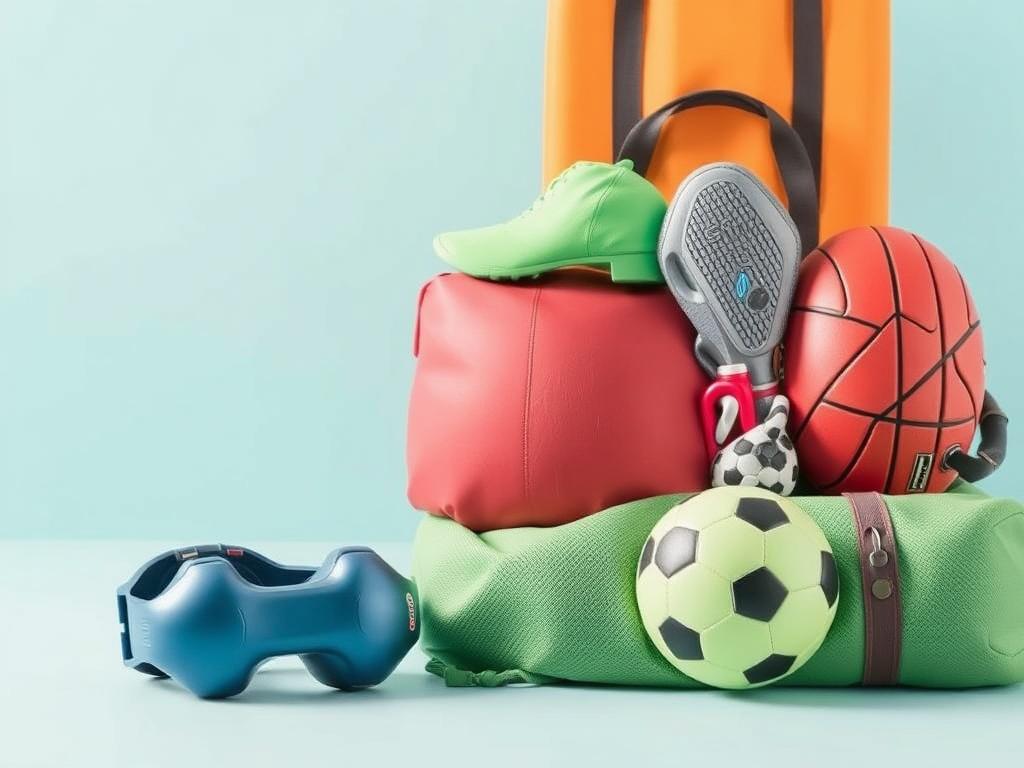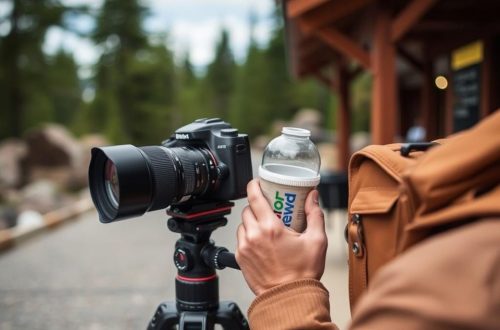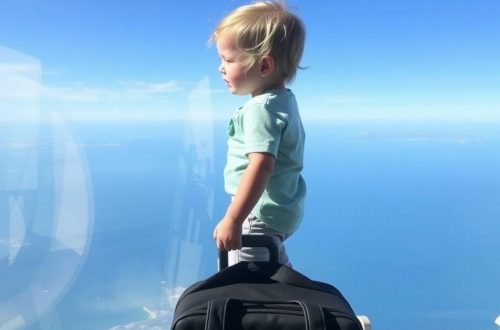
How to Travel with Sports Equipment: Your Ultimate Guide for a Smooth Journey
Traveling with sports equipment can be both exciting and challenging. Whether you’re heading to a tournament, a training camp, or just an adventurous holiday involving your favorite sport, managing your gear properly can make or break your trip. In this guide, we’ll explore everything you need to know about how to travel with sports equipment, from packing tips and airline policies to handling different types of gear and avoiding common pitfalls. By the end, you’ll be equipped with practical advice to ensure your equipment arrives safely and your journey is stress-free.
Planning Ahead: Why Preparation Matters
Traveling with sports equipment requires more planning than a typical vacation suitcase. Unlike clothes or toiletries, sports gear can be bulky, delicate, or oddly shaped, making packing tricky. Airlines and transportation services have specific rules about carrying sports equipment, including size restrictions, fees, and handling procedures. Preparing ahead can save you time, money, and avoid last-minute surprises.
When planning your trip, start by making a list of all the gear you intend to bring. This depends on your sport — whether it’s golf clubs, skis, bicycles, surfboards, or other equipment. Consider how much each item weighs and the space it occupies. This will help you choose the right travel method and gear bags. Knowing the rules of the airline or transport company you are using is essential. Some airlines allow sports equipment as part of your checked baggage, while others require special handling or even prohibit certain types.
How to Pack Sports Equipment: Tips and Tricks
Packing sports equipment efficiently is crucial to protect your gear and avoid extra charges. Here are some key tips to keep in mind:
- Use the Right Bags and Cases: Invest in padded travel bags or hard-shell cases designed for your specific equipment. For example, ski bags with reinforced padding or golf travel cases with wheels make transporting easier and safer.
- Disassemble When Possible: Take apart your equipment to fit into smaller spaces and reduce the risk of damage during transit. For instance, remove bicycle wheels and pedals.
- Protect Fragile Parts: Use foam, bubble wrap, or clothes to cushion vulnerable areas like ski bindings or tennis rackets.
- Reduce Weight Where You Can: Carry only what you absolutely need. Extra weight can mean hefty fees at the airport.
- Label Your Gear: Attach clear labels with your name and contact details in case of lost or misplaced bags.
Example: Packing a Bicycle for Air Travel
| Step | Action | Tips |
|---|---|---|
| 1 | Clean the bike thoroughly | Removing dirt prevents damage and complies with customs rules |
| 2 | Remove pedals, front wheel, and handlebars | Reduces length and prevents breakage |
| 3 | Deflate tires slightly | Helps with pressure changes on planes |
| 4 | Use a hard shell case or padded bike bag | Provides maximum protection during transit |
| 5 | Pack accessories securely | Helmet, tools, and shoes should be packed within the case or a separate bag |
Understanding Airline Policies on Sports Equipment
A vital aspect of traveling with sports equipment is knowing airline policies. Different airlines have varied rules about what constitutes sports gear, size limits, handling procedures, and fees. Some airlines include sports equipment in your baggage allowance, while others charge extra fees.
Here’s a simplified list of what generally happens with sports equipment on airlines:
- Free Checked Baggage: Some airlines allow certain types of sports equipment like golf clubs or tennis rackets as part of your free checked baggage.
- Additional Fees: Oversized or heavy equipment such as surfboards or bicycles may incur extra fees, often expensive.
- Special Handling: Large or fragile items might require advance notice or special permits.
- Carry-on Restrictions: Usually, sports equipment is not allowed in the cabin, except for small items like baseball bats or badminton rackets, subject to security rules.
Before booking, make sure to check the airline’s website for their sports equipment policy. Here’s a sample comparison of policies from common airlines:
| Airline | Included Sports Equipment | Fees for Oversized Gear | Advance Notice Required |
|---|---|---|---|
| American Airlines | Golf clubs, skis, snowboards | $150 each way for bikes | Yes, 24 hours in advance |
| Delta Airlines | Baseball bats, golf clubs | $150 for bicycles or surfboards | Recommended |
| Southwest Airlines | Golf clubs, fishing gear | $75 – $150 for oversized | Not mandatory |
Handling Different Types of Sports Equipment
Different sports demand unique approaches to travel. Let’s look at some popular categories and what you need to keep in mind when traveling with their equipment.
Golf Clubs
Golf bags are often heavy and bulky, but many airlines treat them as standard checked baggage. Using a durable golf travel case with padding and wheels will protect clubs from damage. Remove any loose items like balls and accessories. Always verify the weight limits to avoid fees.
Skis and Snowboards
Ski and snowboard flights require a specialized bag and sometimes a helmet bag. Keep bindings secured and protect edges with padding. Airlines often charge for oversized baggage here, so check fees and try to avoid excess weight in your bag.
Bicycles
As mentioned, bicycles need considerable preparation. Disassembly and sturdy protective cases minimize the risk of damage. Airlines may require signing waiver forms. Carry tools for reassembling upon arrival.
Surfboards
Surfboards are typically long and fragile. Padded bags specifically designed for surfboards reduce damage risks. Due to their size, expect oversized luggage fees. Some airports have surfboard lockers or rental options that can be an alternative.
Tennis and Baseball Gear
Tennis racquets and baseball bats are generally allowed as checked baggage or carry-ons if they meet size restrictions. Secure these items in sports bags or hard cases and pack balls separately.
Traveling Internationally with Sports Equipment
When traveling internationally, customs regulations come into play. Some countries require declarations or special permits for certain sports equipment, especially those made from animal products (like wooden bats or leather balls) or involving technology (like electric bikes).
Always check customs regulations of your destination country before traveling. Carry receipts to prove ownership and value, especially for high-end equipment like skis or bikes, to avoid import taxes or confiscation.
Many countries allow personal sports gear for temporary use without heavy import restrictions, but you should still prepare documentation just in case.
Tips for Managing Sports Equipment During Transit
The journey doesn’t end once your gear is packed. Handling your equipment thoughtfully during transit ensures it arrives in one piece:
- Arrive Early: Give extra time at the airport to manage check-in of bulky equipment.
- Use TSA-Approved Locks: Secure your bags but ensure they can be opened by security if needed.
- Check Your Gear at Each Connection: Sometimes, you might need to retrieve and re-check equipment during layovers.
- Inspect on Arrival: Check for damages immediately and report at baggage claim if anything is wrong.
- Consider Insurance: Travel insurance policies sometimes cover sports equipment for loss or damage.
Packing Checklist for Traveling with Sports Equipment
| Item | Purpose | Notes |
|---|---|---|
| Sport-Specific Bag or Case | To protect and organize gear | Hard cases for fragile items; padded soft bags for flexibility |
| Protective Wraps & Padding | Absorb shocks and protect edges | Bubble wrap, foam, inflatable air bags |
| Tool Kit & Repair Items | Quick fixes upon arrival | Spare parts, multi-tools |
| Labels with Contact Info | Helps in case of loss | Include phone number and address |
| Documentation & Receipts | For customs and insurance claims | Keep digital copies as well |
| TSA-Approved Locks | Secures baggage | Allows TSA access when needed |
Alternatives to Carrying Sports Equipment Yourself
If traveling with large or fragile equipment sounds stressful or expensive, consider alternatives:
- Rent Gear at Destination: Many popular sports locations offer rentals, saving transportation headaches.
- Use Shipping Services: Specialized sports gear shippers can deliver your equipment ahead of time.
- Courier or Freight Services: For international trips, it might be safer to ship expensive gear separately via cargo.
- Buy Second-Hand Locally: If you play a common sport at your destination, you can sometimes find used equipment to borrow or buy.
Each choice has pros and cons involving cost, convenience, and availability, so choose based on your sport, trip length, and budget.
Staying Organized and Stress-Free on Your Sports Trip
Traveling with sports equipment requires additional effort, but staying organized helps enormously. Keep a checklist of all gear, know airline policies intimately, pack methodically, and maintain communication with travel providers. Planning for unexpected situations, like delays or damage, can prevent headaches.
Maintain your gear regularly, so it’s in top shape and can withstand travel strain. Remember, your equipment is the key to your performance and enjoyment at your destination.
Summary of Key Tips
| Tip | Description |
|---|---|
| Check Airline Policies Early | Understand fees, size allowances, and advance notice requirements |
| Invest in Quality Cases | Protect your equipment from damage |
| Label All Gear Clearly | Facilitates recovery if lost |
| Pack Smart | Disassemble and pad gear appropriately |
| Prepare for Customs | Carry receipts and declare properly |
| Consider Travel Insurance | Safeguard against loss or damage |
Conclusion
Traveling with sports equipment is a unique adventure of its own, combining excitement with the need for careful preparation. Understanding how to travel with sports equipment means respecting airline rules, packing smartly, and anticipating challenges so your gear arrives safely and your trip goes smoothly. By investing time in researching policies, choosing the right protective cases, and staying organized, you can focus more on your sport and less on logistics. Whether it’s your first trip or you’re a seasoned traveler, these strategies ensure your sports equipment supports your journey, not complicates it. So next time you pack your gear, remember these insights and step confidently toward your sporting destination.




